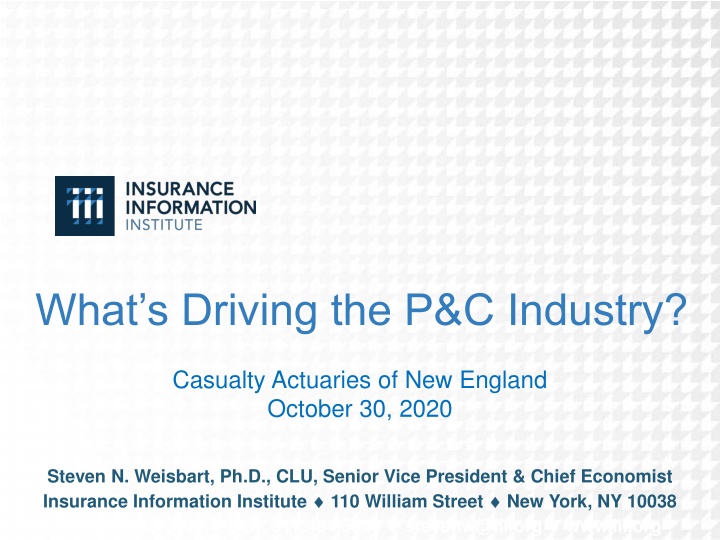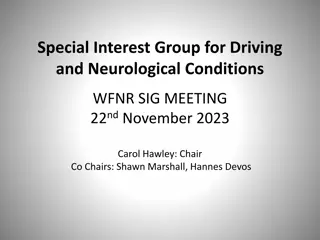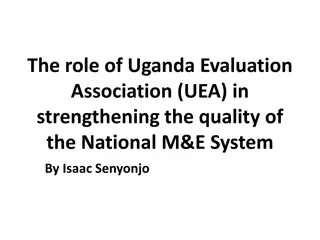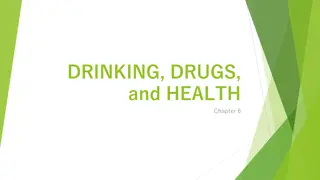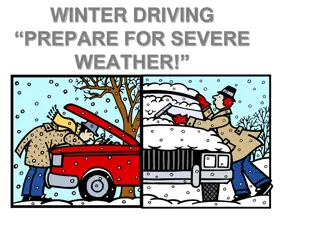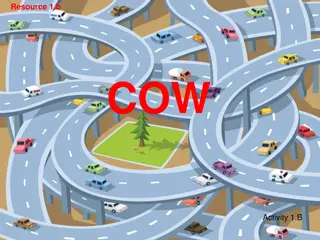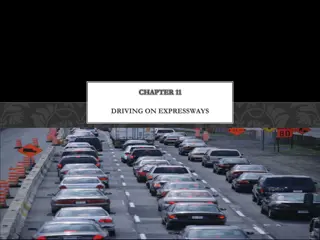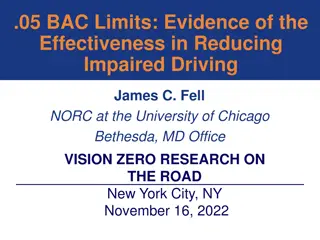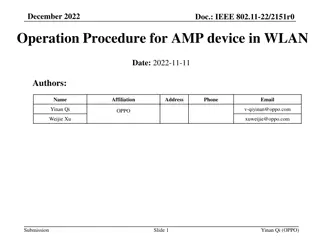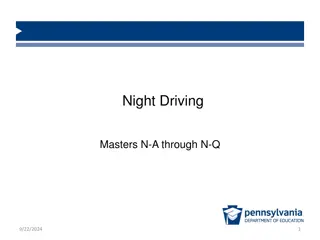Insights into Factors Driving the P&C Industry: An Economic Perspective
The P&C industry's trajectory is intricately tied to the economy, with key factors like virus control, public confidence, and policy actions shaping its outlook. However, economic data, such as the unemployment rate, can be unreliable, highlighting the need for a comprehensive understanding of trends and dynamics. The overall economic strength will significantly impact the insurance environment, emphasizing the importance of staying informed and adaptable in this evolving landscape.
Download Presentation

Please find below an Image/Link to download the presentation.
The content on the website is provided AS IS for your information and personal use only. It may not be sold, licensed, or shared on other websites without obtaining consent from the author.If you encounter any issues during the download, it is possible that the publisher has removed the file from their server.
You are allowed to download the files provided on this website for personal or commercial use, subject to the condition that they are used lawfully. All files are the property of their respective owners.
The content on the website is provided AS IS for your information and personal use only. It may not be sold, licensed, or shared on other websites without obtaining consent from the author.
E N D
Presentation Transcript
Whats Driving the P&C Industry? Casualty Actuaries of New England October 30, 2020 Steven N. Weisbart, Ph.D., CLU, Senior Vice President & Chief Economist Insurance Information Institute 110 William Street New York, NY 10038 Tel: 212.346.5540 Cell: 917.494.5945 stevenw@iii.org www.iii.org
The Economy The path of the economy will depend significantly on the course of the virus [and public confidence]. The course of the virus poses considerable risks to the economic outlook over the medium term. A full recovery is likely to come only when people are confident that it is safe to reengage in a broad range of activities. The path forward will depend on keeping the virus under control, and on policy actions taken at all levels of government. Source: July 29 and September 22 Statements by Federal Reserve Chair Jerome Powell 2
But Data on the Economy Can Be Unreliable For example, take the Unemployment Rate The announced unemployment rate in September for people 55 and over was 6.7%. This is the number of people unemployed in that age group (2.524 million) divided by the civilian labor force in that age group (37.776 million). Sources: BLS; Insurance Information Institute 3
But Data on the Economy Can Be Unreliable For example, take the Unemployment Rate The announced unemployment rate in September for people 55 and over was 6.7%. This is the number of people unemployed in that age group (2.524 million) divided by the civilian labor force in that age group (37.776 million). But in August the civilian labor force in that age group was 38.231 million. So from August to September 455,000 people 55 and over weren t working or looking for work. Many who were unemployed likely declared themselves retired. Sources: BLS; Insurance Information Institute 4
But Data on the Economy Can Be Unreliable For example, take the Unemployment Rate The announced unemployment rate in September for people 55 and over was 6.7%. This is the number of people unemployed in that age group (2.524 million) divided by the civilian labor force in that age group (37.776 million). But in August the civilian labor force in that age group was 38.231 million. So from August to September 455,000 people 55 and over weren t working or looking for work. Many who were unemployed likely declared themselves retired. If they had all remained in the labor force (as unemployed), the unemployment rate for people 55 and overwould have been 7.8%. Sources: BLS; Insurance Information Institute 5
Economic Outlook The Strength of the Economy Will Influence the Insurance Environment
The Economy Drives P/C Insurance Industry Premiums: Net Premium Growth (All P/C Lines) vs. Nominal GDP: Annual Change, 1971-2021 24% NWP Nominal GDP This isn t a hard market. It s driven by the tax law change. 20% 16% 12% 8% 4% 0% -4% 71 73 75 77 79 81 83 85 87 89 91 93 95 97 99 01 03 05 07 09 11 13 15 17 19 21 The GDP plunge in 2020 could drag NWP down Except for the three hard markets in this 50-year period, Net Written Premiums track Nominal GDP not year by year but fairly well. Sources: A.M. Best (1971-2013), ISO (2014-19); U.S. Commerce Dept., Bureau of Economic Analysis; I.I.I. 2020 and 2021 are Blue Chip median forecasts, Oct. 2020 issue 8
Quarterly U.S. Real GDP Growth (at annual rates): Range of Forecasts, 2020-2021 35.0% 33.1% Bottom 10 Avg Median Top 10 Avg 30.0% 25.0% 20.0% 15.0% 10.0% 6.2% 6.0% 5.8% 5.7% 5.2% 4.0% 4.0% 3.8% 3.7% 3.4% 5.0% 2.2% 2.1% 2.1% 2.1% 1.3% 0.0% 2020:Q3 2020:Q4 2021:Q1 2021:Q2 2021:Q3 2021:Q4 Forecasts expect U.S. growth to recover slowly through 2021. Sources: Blue Chip Economic Indicators, Oct. 2020 issue; Insurance Information Institute. 9
Quarterly U.S. Real GDP: Actual and Forecasts, 2019-2021F Tough times ahead? The economy is not forecast to reach its pre- recession (2019:Q4) level until the $ Billions of chained 2012 collars $19,500 last quarter of 2021. $19,318.2 $19,254.0 $19,000 $19,155.6 $19,141.7 $18,950.3$19,020.6 $19,010.8 $18,980.8 $18,612.8 $18,797.7 $18,500 $18,584.0 $18,000 +7.4% $17,500 $17,302.5 $17,000 2019:Q1 2019:Q2 2019:Q3 2019:Q4 2020:Q1 2020:Q2 2020:Q3 2020:Q4 2021:Q1 2021:Q2 2021:Q3 2021:Q4 Sources: Blue Chip Economic Indicators, Oct. 2020 issue; Insurance Information Institute. Plot points for 2020:Q3 are preliminary and later are forecasts. 10
Economic Growth Depends on People Having Income and Spending It* $ Billions Personal Consumption Expenditures Disposable Personal Income $20,000 $19,005.4 $19,000 $18,085.7 $17,964.4 $17,589.2 $18,000 $16,565.4$16,567.8$16,714.4$16,831.3$16,550.1 $17,811.6 $17,000 $17,438.9 $16,000 $14,752.8$14,796.3$14,880.5$14,877.4 $14,578.4 $15,000 $14,229.0 $13,878.5 $14,000 Personal Saving as a % of DPI Nov 2019: 7.9% Dec. 2019: 7.2% Jan. 2020: 7.6% Feb 2020: 8.3% Mar. 2020: 12.9% Apr. 2020: 33.6% May 2020: 24.5% Jun. 2020: 18.7% Jul. 2020: 18.1% Aug. 2020: 14.8% Sept. 2020: 14.3% $13,165.4$14,014.6 $14,376.9 $13,000 $12,112.1 $12,000 $11,000 Spending plunged due to lockdowns and fear of contracting the virus $10,000 $9,000 $8,000 $7,000 Nov-19 Dec-19 Jan-20 Feb-20 Mar-20 Apr-20 May-20 Jun-20 Jul-20 Aug-20 Sep-20 In 2020:Q2 we had the largest drop in credit card balances in history--$75 billion. Consumption (70% of the economy) is cautious. *Data are seasonally adjusted at an annual rate Sources: bea.gov, Personal Income and Outlays, published October 30, 2020, Table 1; Insurance Information Institute. 11
Spending* Varies; Effect on P/C Insurance? % change from February spending on durable goods spending on nondurable goods spending on services 15% 10.7% 10.6% 13.9% 8.9% 4.9% 3.7% 5% 3.1% 2.9% 5.0% 1.0% -1.4% 0.0% 0.0% 0.0% -5% -8.8% -11.4% -9.0% -7.3% -8.0% -9.1% -10.3% -15% -15.5% -21.3% -20.1% -25% Feb-20 Mar-20 Apr-20 May-20 Jun-20 Jul-20 Aug-20 Sep-20 *Data are inflation-adjusted Sources: bea.gov, Personal Income and Outlays, published October 30, 2020, Table 7; Insurance Information Institute. 12
An Annual Rate of Nearly One Million New Homes Sold* in August and September 2020 2018 2019 2020 Thousands 1,050 1,000 950 Since May 2020, new home sales have been rising sharply compared with the same month in prior years. 900 850 800 750 700 650 600 550 Jan Feb Mar Apr May Jun Jul Aug Sep Oct Nov Dec Inventory is shrinking quickly (from 6.8 months supply in April 2020, down to 3.6 months supply in September), which means that newly-constructed homes are selling faster than builders can build them. *Seasonally adjusted, at an annual rate; Sept 2020 is preliminary Sources: Census Burearu, Monthly New Residential Sales, September 2020, Table 1a and FRED https://fred.stlouisfed.org/series/HSN1F; Insurance Information Institute. 13
Construction Started on New 1-Family Housing Units => Recovery? 2018 2019 2020 Thousands* 1,200 +22.03% over Sept 2019 1,100 1,000 900 800 700 600 Jan Feb Mar Apr May Jun Jul Aug Sep Oct Nov Dec Single-family home construction is above the rate reached pre-recession. *Seasonally adjusted at an annual rate Sources: https://fred.stlouisfed.org/series/HOUST1F ; Insurance Information Institute. 14
Personal Consumption Expenditures: Home remodeling and new contents, Quarterly $ Billions $350 $325 $300 $275 $250 $225 Home remodeling furniture, major appliances, TVs, computers $200 $175 19:q1 18:q1 18:q2 18:q3 18:q4 19:q2 19:q3 19:q4 20:q1 20:q2 17:Q1 17:Q2 17:Q3 17:Q4 20:q3F 20:q4F 2020:Q2 vs. 2019:Q4: furniture, major appliances, TVs, computers -0.4% Data are seasonally-adjusted, annualized. Sources: US Bureau of Economic Analysis, NIPA, Table 2.4.5U (furniture, major appliances, TVs, computers); Harvard Joint Center for Housing Studies (home remodeling); Insurance Information Institute. 15
Change in Nonresidential Fixed Investment: Implications for Commercial Insurance Percent change from same quarter, prior year Slower growth in exposure base bodes ill for commercial premium growth 16 12 8 4 0 -4 Structures Equipment Intellectual property products -8 -12 -16 2014:Q1 2013:Q1 2013:Q2 2013:Q3 2013:Q4 2014:Q2 2014:Q3 2014:Q4 2015:Q1 2015:Q2 2015:Q3 2015:Q4 2016:Q1 2016:Q2 2016:Q3 2016:Q4 2017:Q1 2017:Q2 2017:Q3 2017:Q4 2018:Q1 2018:Q2 2018:Q3 2018:Q4 2019:Q1 2019:Q2 2019:Q3 2019:Q4 2020:Q1 2020:Q2 2020:Q3 Sources: bea.gov, news release Gross Domestic Product: Second Quarter 2020 (Third Estimate), Table 6; Insurance Information Institute. 16
P/C Insurance Industry: Financial Update It s Hard to Know Where We Stand or Where We re Going
Net Premium Growth vs. Nominal GDP, First-Half-Year Percent Change Provisions in the Tax Cuts and Jobs Act reform led to a spike in net premiums written in 2018. If NPW is averaged over 2017-19, the annual growth rate is (a more typical) 6.9 percent. 12% 9% 6% 3% In the last dozen years, this kind of divergence between nominal GDP and NPW has never happened! 0% -3% -6% 08 09 10 11 12 13 14 15 16 17 18 19 20 NPW Change GDP Change All data through second quarter. Sources: NAIC data sourced through S&P Global Intelligence, Bureau of Economic Affairs, Insurance Information Institute. 18
U.S. Inflation-Adjusted Insured Cat Losses Harvey, Irma, Maria 111 $110 Katrina, Rita, Wilma Average for Decade $100 Hurricane Andrew WTC $90 80 $80 Billions, 2019 $ $70 $60 2010s: $35 B 2000s: $25 B 51 1990s: $15 B $50 41 38 $40 1980s:$5 B $30 2425 $20 $10 $0 80 82 84 86 88 90 92 94 96 98 00 02 04 06 08 10 12 14 16 18 20* 2020:1H at mid-year already the 5th worst year of the last 10. With wildfires and hurricanes in the 3rd quarter, heading toward the third worst year in the last 10. *2020: ISO data for first half of 2020. 2010s is average of 2010 to 2019. All losses are Direct. Sources: Property Claims Service, a Verisk Analytics business; Insurance Information Institute. 19
CAT Claims as a Percent of Total Claims,* 1st Halves, 2011-2020 14.01% 14% 11.53% 12% 10% 9.10% 8.57% 7.89% 7.37% 8% 7.25% 6.45% 6.30% 6.13% 6% 4% 2% 0% 11 12 13 14 15 16 17 18 19 20 CAT claims in the first half of the year are normally a product of heavy winter storms and/or destructive tornadoes. 2020 was an atypical year. *both claims totals are net of reinsurance and include Loss Adjustment Expenses Sources: ISO PCS; Insurance Information Institute calculations. 20
Net Underwriting Gains & Losses, 1st Halves of Each Year, 2008-2020 $ Millions $8,000 $6,000$5,400$4,600 $3,500 $4,000 $2,400 $300 $0 -$1,500 -$4,000 -$2,500 -$4,500 -$5,700 -$6,300 -$8,000 -$7,500 Best three years of first- half U/W gains in the past decade -$12,000 -$16,000 -$20,000 -$24,000 -$26,100 -$28,000 08 09 10 11 12 13 14 15 16 17 18 19 20 Net underwriting results in the first half of the year have been quite variable, but gains in 6 of the last 8 years. Sources: ISO/PCI; Insurance Information Institute. 21
P/C Industry Net Income After Taxes*, 1st Halves, 2007-2020 $ Billions, 2018 dollars $35 $34.0 $33.7 $32.8 $30 $28.3 $27.2 $25 $24.3 $23.0 $20 $21.5 $19.3 $18.0 $15 $16.0 $10 $7.7 $5 $5.8 $0 08 09 10 11 12 13 14 15 16 17 18 19 20 In the first half of the year, after-tax net income varied. 2020 was just above the median in the last dozen years. *adjusted for inflation using the BLS CPI calculator, to 2018 dollars Sources: ISO, a Verisk Analytics company; Insurance Information Institute. 22
Policyholder Surplus, 20062019 Surplus as of 6/30/20 stood at $837.0B ($ Billions) $900 $800 $700 $600 $500 $400 2006 2007 2008 2009 2010 2011 2012 2013 2014 2015 2016 2017 2018 2019 2020:1H The industry now has $1 of surplus for every $0.79 of NPW, near the strongest claims-paying status in its history. The P/C insurance industry is in very strong financial condition. Sources: ISO, A.M .Best. 23 23
The Investment Story: Lower for Longer Depressed Yields Will Necessarily Influence Underwriting & Pricing
26 US Treasury Note 10-Year Yields* 7.0% 6.5% Yields on 10-Year US Treasury Notes have been below 3% for over 8 years: 10-year U.S Treasury bonds bought in 2011 at 3.5% will be reinvested today at less than 1.0% for 10 more years 6.0% 5.5% 5.0% 4.5% 4.0% 3.5% 3.0% 2.5% 2.0% 1.5% Recession 1.0% 0.5% 10-Yr Yield 0.65% 0.0% '00 '01 '02 '03 '04 '05 '06 '07 '08 '09 '10 '11 '12 '13 '14 '15 '16 '17 '18 '19 '20 Since nearly 50% of P/C bond/cash investments are in 5-year or longer maturities, most P/C insurer portfolios will have low-yielding bonds for years to come. *Monthly, constant maturity, nominal rates, through August 2020. Sources: Federal Reserve Bank at http://www.federalreserve.gov/releases/h15/data.htm; National Bureau of Economic Research (recession dates); Insurance Information Institute. 26 26
27 BofA AA Corporate Index Effective Yields,* 2000 2020 8.0% 7.0% The yield on these bonds has been lower than 3% for most of the last decade 6.0% 5.0% 4.0% 3.0% 2.0% Recession 1.48% 1.0% Yield 0.0% '00 '01 '02 '03 '04 '05 '06 '07 '08 '09 '10 '11 '12 '13 '14 '15 '16 '17 '18 '19 '20 Since the yield on these bonds has been lower than 3% for most of the past decade, many P/C insurer portfolios will have low-yielding bonds for years to come. *Monthly, not seasonally adjusted, through September 2020. Sources: Federal Reserve Bank at https://fred.stlouisfed.org/series/BAMLC0A2CAAEY ; National Bureau of Economic Research (recession dates); Insurance Information Institute. 27 27
Net Investment Gains Vary Mainly With Realized Capital Gains/Losses, 1st Halves, 2007-2020 $ Billions $35 net investment income realized capital gains/losses $5.0 $30 $5.4 $4.3 $3.9 $2.5 $7.4 $4.1 $1.8 $3.5 $25 $3.6 $4.5 $20 $31.0 $15 $29.0 $27.0 $26.9 $26.9 $26.8 $26.6 $25.5 $25.3 $24.4 $24.1 $23.7 $23.4 $22.6 $10 $5 $0 -$1.2 -$1.4 -$5 -$12.8 -$10 -$15 07 08 09 10 11 12 13 14 15 16 17 18 19 20 In the first half of the year, net investment income has been steady but realized capital gains/losses have been variable. Sources: ISO/PCI; Insurance Information Institute. 28
P/C Insurer Portfolio Yields, 2002-2020:1H 6% Portfolio Yield US Treasury 10 Yr Yield 4.85 5% 4.594.50 4.49 4.44 4.20 4.03 3.93 3.733.833.68 4% 3.64 3.43 3.353.22 3.183.04 3.03 2.96 3% 2% 1% 0% 02 03 04 05 06 07 08 09 10 11 12 13 14 15 16 17 18 19 20:1H The yield on the 10-Year U.S. Treasury note is a proxy for prevailing interest rates. Since 2008 it has generally led the P/C portfolio rate downward. That trend now seems likely to continue for several more years. Sources: NAIC data, sourced from S&P Global Market Intelligence; FRED; Insurance Information Institute. 29
P/C Insurer Bond Distribution, Year-end 2009-2019 Bonds 10 Years or More Bonds Less Than 1 Year Bonds 1-5 Years Bonds 5-10 Years 2019 40.58% 32.38% 11.39% 15.50% 2017 37.12% 34.26% 13.07% 15.32% 2015 35.85% 33.70% 14.13% 16.31% 2013 38.76% 29.28% 15.50% 16.45% 2011 41.22% 27.32% 16.57% 14.89% 2009 36.37% 29.03% 18.98% 15.62% 0% 25% 50% 75% 100% From 2009 to 2019, the percent of bonds with 1-5-year maturities rose from 36% to 41% but those with 10 or more years of maturity fell from 19% to 11%. Sources: NAIC via S&P Global 30
Commercial Lines Rate Change (vs. Year Earlier) Since 9/09 7% 6.25 6% 5 5 5 5 5 5 4.54.8 5% 4 4 4% 3 3 3 3 3% 2.52.5 2 2 2 2 2 2 2% 1 1 1 1 1% 0 0 0 0 0% -1% -1 -1 -1 -1 -2% -3% -3 -3 -3 -4% -4 -4 -4 -4 -4 -4 -5% -5 September 2015: First Overall Decrease Since August 2011 -6% -7% -8% 2009:Q3 2009:Q4 2010:Q1 2010:Q3 2010:Q4 2011:Q1 2011:Q2 2011:Q3 2011:Q4 2012:Q1 2012:Q2 2012:Q3 2012:Q4 2013:Q1 2013:Q2 2013:Q4 2014:Q1 2014:Q2 2014:Q3 2014:Q4 2015:Q1 2015:Q2 2015:Q3 2015:Q4 2016:Q1 2016:Q2 2016:Q3 2016:Q4 2017:Q1 2017:Q2 2017:Q4 2018:Q1 2018:Q2 2018:Q3 2018:Q4 2019:Q1 2019:Q2 2019:Q3 2019:Q4 2020:Q1 2020:Q2 2020:Q3 2010:Q2 2013:Q3 2017:Q3 Sources: MarketScout, Insurance Information Institute. 32
33 Workers Comp Premiums, 2007 2020 Remarkably, total Workers Comp premiums have declined almost continually since 2007. From January 2007 to August 2020, -11.4%. This is even more remarkable given that total private employment rose by 14.7 million through February 2020 (+6.4 million through August 2020). Index: Jan 2007=100 115 112 109 106 103 100 97 94 91 88 '07 '08 '09 '10 '11 '12 '13 '14 '15 '16 '17 '18 '19 '20 Recession private employment WC premiums Monthly, not seasonally adjusted, through August 2020. Sources: U.S. Bureau of Labor Statistics, Producer Price Index (WC premiums Index) and private employment; National Bureau of Economic Research (recession dates); Insurance Information Institute. 33 33
34 CMP and Liability Premiums, 2007 2020 Since 2007, total CMP premiums have risen about 14%. The Great Recession slowed this increase but not the current recession. Premium increases for liability insurance were slowed by both recessions but rose by about 10% overall. Index: Jan 2007=100 Recession premiums for product and other non-auto liability CMP premiums 115 112 109 106 103 100 97 '07 '08 '09 '10 '11 '12 '13 '14 '15 '16 '17 '18 '19 '20 Monthly, not seasonally adjusted, through August 2020. Sources: U.S. Bureau of Labor Statistics, Producer Price Index (CMP premiums Index) and private employment; National Bureau of Economic Research (recession dates); Insurance Information Institute. 34 34
COVID-19 and its effect on the P/C Insurance Industry
We Are Working and Playing Differently Zoom Meetings Restaurant Take Out Staying Home Social Distancing 36
37 Percent Change in Vehicle Miles Traveled From same month, prior year 5% 0.9% 1.2% Is this the new normal in vehicle miles traveled? 0% -5% -10% -15% -12.3% -20% -25% -30% -35% -40% -40.1% -45% 10/1/2017 10/1/2018 10/1/2019 1/1/2017 4/1/2017 7/1/2017 1/1/2018 4/1/2018 7/1/2018 1/1/2019 4/1/2019 7/1/2019 1/1/2020 4/1/2020 7/1/2020 In Jan and Feb 2020, VMT rose by 2.2% each. In March, mostly in the last two weeks, it fell by 19%. In May it was down 25.6%, in June 13.2%, in July 11.2%. Monthly, through August 2020. Sources: https://fred.stlouisfed.org/series/TRFVOLUSM227NFWA#0 ; National Bureau of Economic Research (recession dates); Insurance Information Institute. 37 37
COVID-19s Potential Claims Impact Workers 0.2 92.0 Compensation Political risk, credit, surety 0.8 Mortgage 1.7 What is all this equivalent to? Loss estimates range from $30B ( onebad hurricane) to $140B (2-3 Katrinas) GL 0.7 27.0 EPLI 0.3 2.6 D&O 0.6 4.0 BI 2.0 22.7 0 20 40 60 80 100 Billions of US$ COVID-19 s Potential Investment Impact Volatile stocks, bond yields plunging Lloyd s estimate: $96B in investment losses Sources: Willis Towers Watson, Insurance Information Institute.. 38
Possible Long-Term Effects Survivors May Face Long-term effects Organ damage (heart, lungs, brain) Blot clots and blood vessel problems (plus heart attacks and strokes Problems with mood and fatigue Others Sources: NBC News, October 16,2020; mayo clinic; insurance information institute 39
The Pandemics Effect on Inflation Measurement
CPI Forecasts for 2020-2021 Bottom 10 average Median Top 10 average 6% 5% 4% 3% 2% 1% 0% 20:Q3 20:Q4 21:Q1 21:Q2 21:Q3 21:Q4 If the top forecasts are correct, bond yields should rise significantly Note: Data are percent change from prior quarter, at an annual rate. Sources: Blue Chip, October 2020; Insurance Information Institute. 41
Inflation Measurement: Methodological Challenges Comparing Prices of Identical Items Some prices can t be compared New products (e.g., new drugs) New services (e.g. new medical treatment) Prices of some goods or services must be adjusted to remove the price-effect of new elements Cars with new safety features Improved cell-phone service Higher prices for output from places of business (e.g., restaurants, factories) with new Covid-19 protection 42
Inflation Measurement: Methodological Challenges Collection Methods for Prices of Commodities and Services March 2019 March 2020 Collected prices Collection mode personal visit phone online other 87% 75% 67% 9% 14% 9% 37% 12% 39% 16% 43
Insurance Information Institute www.iii.org Thank you for your time and your attention! 45
